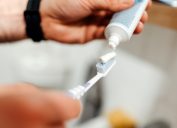What Happens If You Don't Replace Your Toothbrush Every 3 Months, According to Dentists
If you haven't switched yours out recently, you'll want to after reading this.
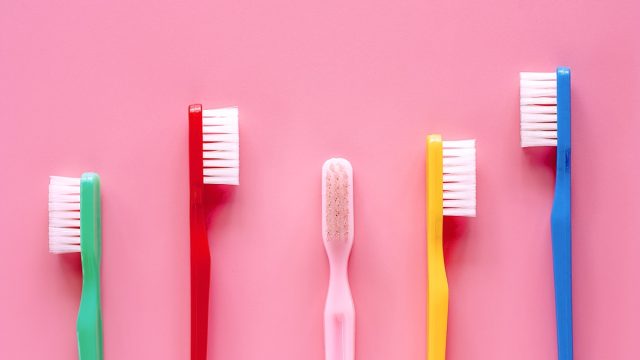
Your toothbrush is an important tool for maintaining oral hygiene. Replacing it regularly ensures that it can do its job properly and helps prevent tooth decay, gum disease, and bad breath. More specifically, the Centers for Disease Prevention and Control (CDC) advises replacing your toothbrush every three months. In some cases, you may even want to swap it out for a new one sooner than that.
According to Jennifer Silver, DDS, a dentist at Macleod Trail Dental, your toothbrush's bristles start to become frayed, worn, and less effective at removing plaque and bacteria from your teeth and gums over time.
The bottom line? If you don't replace your toothbrush or electronic toothbrush head every three months or so, that can have major consequences on your dental health. Here are a few things that might happen if you don't stick to this expert-recommended guideline.
READ THIS NEXT: Never Do This After Brushing Your Teeth, Dentists Warn.
You may not get rid of plaque.
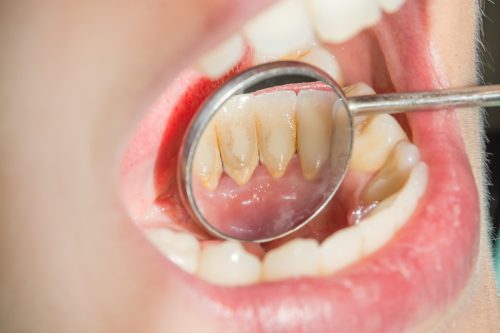
According to Tyler Hales, DDS, a cosmetic dentist and co-founder of Hales Parker Dentistry, older toothbrushes are less likely to remove plaque. This is because the bristles begin to flare and fray, making it more difficult for them to scrub away these deposits.
Plaque is a sticky, colorless film that forms on your teeth when the bacteria in your mouth mixes with the starchy and sugary foods you eat. When left untreated, it can lead to cavities and gingivitis.
READ THIS NEXT: This Common Bathroom Habit Is a "Disaster" for Your Teeth, Dentist Warns.
You may experience tartar buildup.
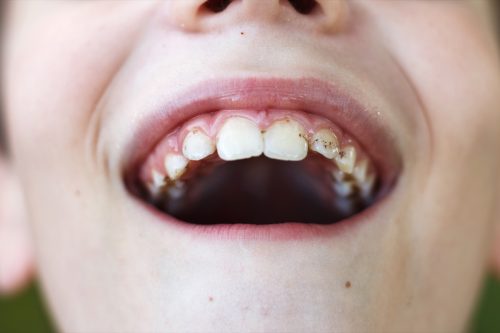
When plaque lingers on your teeth for some time, it can mix with minerals in your saliva and harden into tartar, which is much tougher to remove. Since worn-down bristles are less effective at getting rid of plaque, Hales warns that you're more likely to end up with a build-up of tartar when you don't replace your toothbrush often enough.
Both plaque and tartar can take a toll on your dental health, promoting bad breath, gum disease, and erosion of the enamel—the latter of which can lead to tooth sensitivity and even cavities.
You expose your teeth to more bacteria.
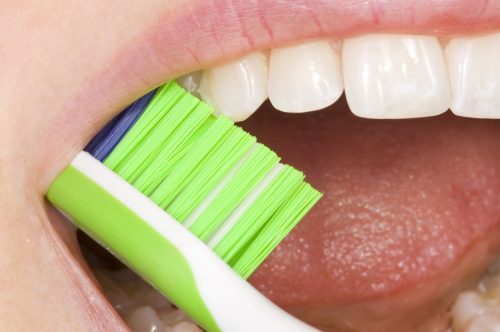
"At about three months is when the bristles begin to flare and weaken, and bacteria starts to build up on the toothbrush," says Lior Tamir, DDS, a cosmetic and reconstructive dentist at Bloom Dental Group.
According to Hales and Silver, this means that each time you brush, you're reintroducing the bacteria back into your mouth, which can cause potential tooth decay or gum infections.
For more health news sent directly to your inbox, sign up for our daily newsletter.
You may experience gum damage and sensitivity.

Don't be surprised if you start experiencing tenderness around your gums or see a little blood in the sink after brushing if you haven't replaced your toothbrush in a while.
Assuming you brush your teeth twice a day, your toothbrush is likely to get pretty frayed by the three-month mark. As a result, it'll be much harsher on your gums.
"Using a toothbrush with frayed bristles can be too abrasive on the gums, causing them to become red, swollen, and bleed," explains Silver.

